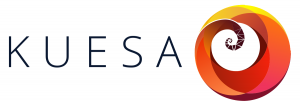Kuesa 3D Studio 1.2 – Press Release

KUESA™ 3D Studio 1.2 released
A Complete Design-to-Code Workflow Solution for 3D Assets in Real-time Applications
- version 1.2 released
- makes 3D design and development workflows easy, fast and reliable
- offers support for Maya, Autodesk 3ds Max, and Blender as well as any other glTF-compatible digital content creation tools
- New: Iro materials library can simulate common surface properties with less designer and GPU overhead
- free live webinar June 4th, 6pm CEST
Berlin, June 2nd 2020
Building software that is dependent on real-time 3D models – like for example an automotive dashboard, MRI machine, factory control system or furniture design tool – requires not only 3D designers and 3D programmers. It also demands the ability to bring these very different skill sets together into a smoothly operating workflow.
In conventional workflows, a massive problem is that the assets created by 3D artists can rarely be used by programmers directly, forcing the development team to hand-tweak models and hand-code animations to make things work. It also forces designers to move their designs to target hardware to see how they’ll actually appear. This manual work extends product release timelines, and the artificial wall it creates between 3D artists and software engineers is a bottleneck that prohibits rapid iteration and the fine-tuning required to develop fast and high-quality results.
To eliminate this problem KDAB created KUESA 3D Studio. It makes the collaboration of designers and developers much more manageable by offering a seamless, integrated workflow. Designers can realize their vision using their favorite tools, developers can focus on their strengths without having to deal with design issues, and management can rely on getting better products to market faster.
How does KUESA 3D Studio work?
KUESA 3D Studio is comprised of three main components.
The KUESA 3D Design Plugins augment a designer’s preferred digital content creation tools, allowing them to create and export fully accessible 3D scenes and to display content that visually matches the run-time environment.
Many additional utilities are integrated in KUESA 3D Tools for fine-tuning, conditioning, investigating, debugging, and optimizing 3D assets, usable by either designers or developers.
Libraries built on top of Qt and Qt 3D allow developers to integrate 3D scenes directly into applications. This module is called KUESA 3D Runtime.
What’s new in version 1.2?
One of the most significant improvements is the Iro Materials Library. Physically-based rendering (PBR) can generate amazing images, but not all embedded systems have enough processing power to handle it. Also, without knowing the actual physics, PBR isn’t easily tweakable to simulate materials such as a pre-defined bitmap that needs to appear glossy. For these cases, or any other where PBR may be overkill, KUESA 3D Studio supports the Iro Material Library. This library provides a catalog of materials that can simulate common surface properties (such as reflections, clear-coated paint, and transparency) and gives great looking results with less designer and GPU overhead.
By default, glTF™ only allows you to animate transformation properties like translation, rotation, scale. In lots of cases, it would be useful to animate other properties like material properties, camera properties etc. This has now been added through the use of a custom glTF extension.
An additional benefit is brought in by Qt 3D, which KUESA 3D Studio is based on and which is maintained by KDAB. With Qt 3D on Qt 5.15.0 very potent profiling capabilities have been added.
More features:
- Support for Maya, Autodesk 3ds Max, and Blender, as well as any other glTF-compatible digital content creation tools
- Ability to build 3D scenes with PBR, non-PBR, and node-based materials
- Real-time performance on desktop and embedded systems
- Integration of both 3D and 2D assets
- Compressed textures, meshes, and images for faster load times, reduced application size, and optimal use of GPU resources
- Full programmatic access to scene items with APIs in C++ and QML
- Photo-realistic results consistent across design tools and applications
- Special effects like bloom and depth-of-field
- Up to date with Qt 3D performance improvements in Qt 5.15
- Ability to incorporate tools into a continuous integration system resulting in consistent 3D asset verification and conditioning
- Availability of AGPL 3 license for KUESA 3D Runtime
———————————————————————————————————————————
More information on www.kuesa.com
Live demo webinars:
About the KDAB Group
The KDAB Group is the world’s leading software consultancy for architecture, development and design of Qt, C++ and OpenGL applications across desktop, embedded and mobile platforms and is one of the biggest independent contributors to Qt. Our experts build run-times, mix native and web technologies, and solve hardware stack performance issues and porting problems for hundreds of customers, many among the Fortune 500. KDAB’s tools and extensive experience in creating, debugging, profiling and porting complex applications help developers worldwide to deliver successful projects. KDAB’s trainers, all full-time developers, provide market leading, hands-on, training for Qt, OpenGL and modern C++ in multiple languages. Founded in 1999, KDAB has offices throughout North America and Europe.
More Information on www.kdab.com
Press Contact: press@kdab.com
Download this report
- as a .pdf: Kuesa 1.2 press release
- as a Word file: Kuesa 1.2 press release
- as a Pages files: Kuesa 1.2 press release

